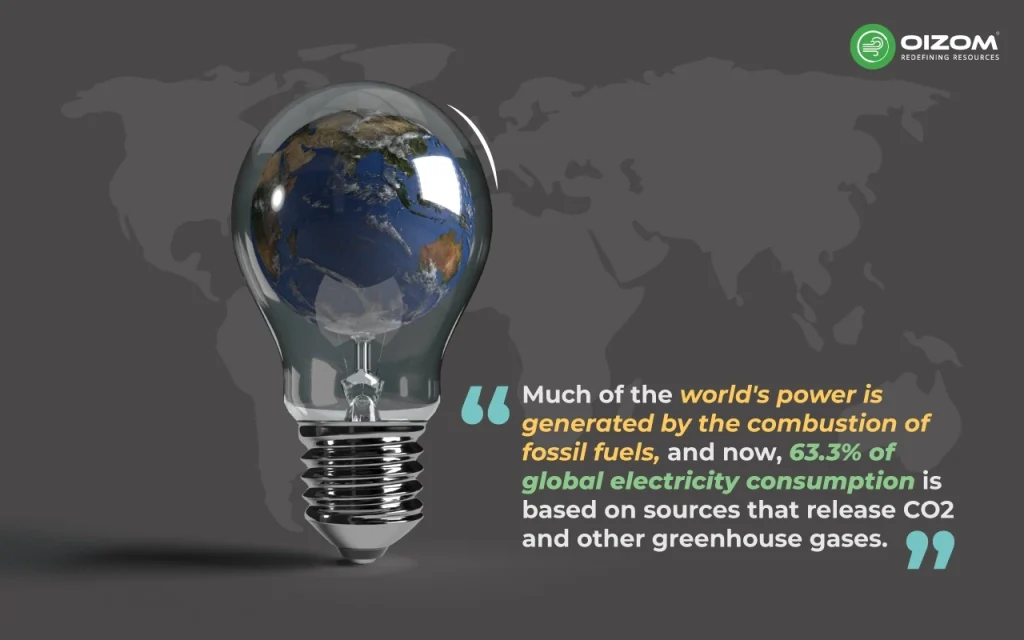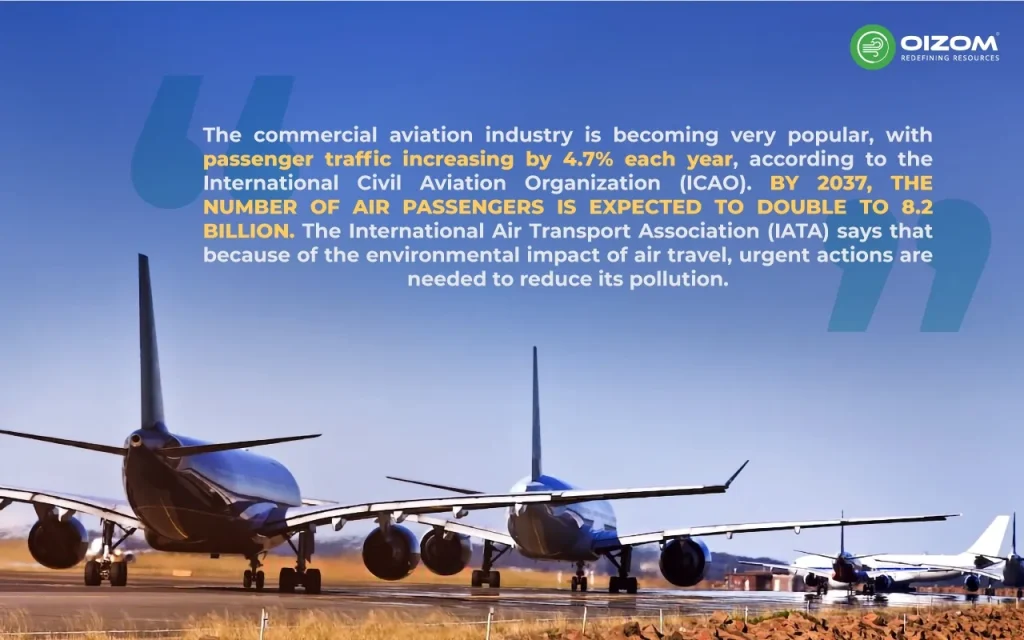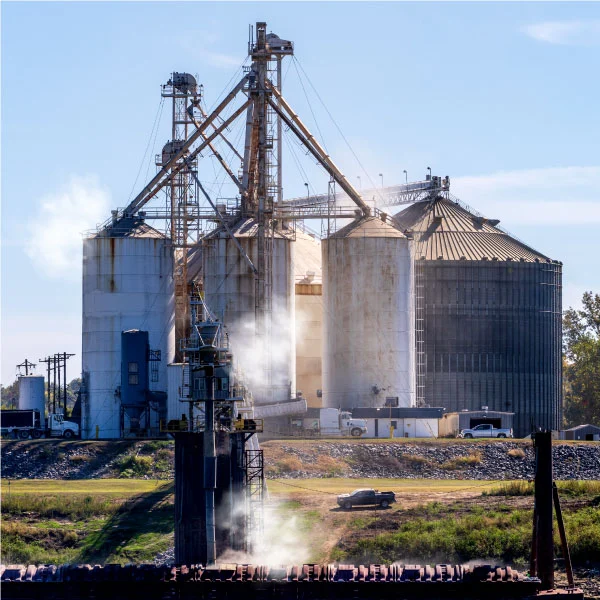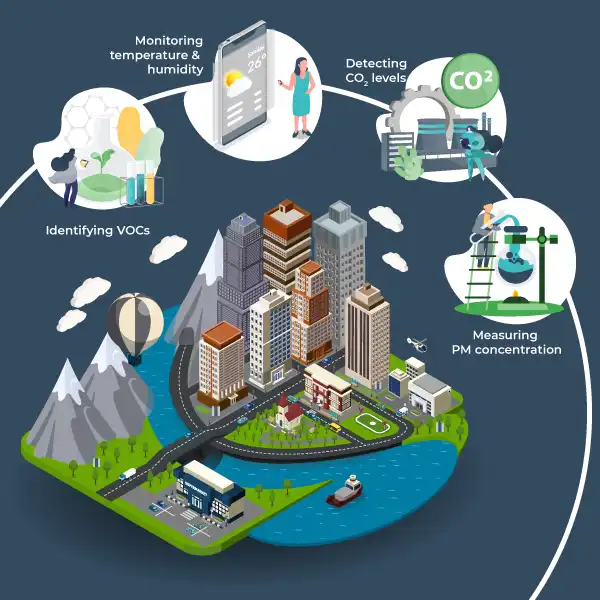Summary of Blog
The blog explores the major industries emitting the highest amounts of CO2 and their effects on air quality. Among industries, energy generation, fossil fuels, transportation, manufacturing, and agriculture are major drivers. Energy generation from coal-based and natural gas power plants, transportation and industrial operations like cement and steel manufacturing are major CO2 emitters. This emphasizes the need to accurately detect and reduce emissions from these sectors to tackle climate change. IoT Technology-based air quality monitors like Polludrone offer real-time monitoring to help industries track air quality data and can help reduce their emissions. A collaborative effort from governments, businesses, and individuals is essential to protect the environment and mitigate the effects of greenhouse gases.
Introduction
Have you ever wondered which industries emit the most carbon dioxide (CO2)? You’re in the right place. In this article, I will discuss the major industries that produce CO2. We are all familiar with how CO2 is released from various sources. In the fight against climate change, identifying the sources of carbon dioxide (CO2) emissions is critical. Industries have a considerable impact on global CO2 emissions, with some sectors generating more than others.
Carbon dioxide is a greenhouse gas primarily responsible for global warming emissions. Anthropogenic activities also contribute to this, as they affect global average temperatures. The Intergovernmental Panel on Climate Change (IPCC) highlights the importance of lowering carbon emissions to prevent the worst effects of the global warming crisis. But what should we prioritize? Identifying the world’s most polluting sectors is a sure strategy to reduce emissions in the least amount of time.
As a major greenhouse gas, rising CO₂ levels contribute significantly to climate change, making it crucial to track sustainability efforts. In indoor environments, high CO₂ levels indicate poor ventilation, which can lead to fatigue, headaches, and reduced productivity. Regular monitoring of CO2 helps ensure healthier spaces, supports emission control strategies, and guides smarter environmental decisions.
Why Industry Specific CO2 Emissions Matter?
Limiting greenhouse gas (GHG) emissions at their source is the most direct way to mitigate worsening climate disasters. But to do that effectively, we need to know exactly where emissions come from and that’s why industry-specific data is important.
Emissions are similar in nature and neither are the industries behind them. Power generation, steel, cement, transportation, and agriculture each have different emission outputs and demand specific mitigation strategies. Without having appropriate mitigation plans, tackling emissions becomes too generic to deliver real impact.
Here’s why tracking CO₂ emissions by industry matters:
Effective Climate Strategy:
Governments, companies, and global coalitions can’t develop decarbonization plans without knowing the high-emission sectors. Accurate data helps in smarter regulation, funding, and innovation targeting.
Technology Matching:
Solutions for reducing emissions vary across different industries. The steel industry may require green hydrogen, transportation needs electrification, and buildings benefit from improved insulation. Understanding the sector leads to targeted solutions.
Corporate & Investment Accountability:
Sector-specific emission sources help investors and regulators identify major emitters and hold them accountable.
Health and Environmental Justice:
Biggest CO2 Emitters By Industry
1. Energy Production
- It accounts for roughly ~73% of global greenhouse gas (GHG) emissions. It is primarily driven by coal, oil, and natural gas for electricity, heating, and industrial use.
- Even in 2024, fossil fuels still account for over 60% supply of the world’s electricity needs.
2. Industry & Manufacturing
- It contributes around 21% of global emissions, especially from cement, steel, and chemical production. Where cement alone is responsible for 7% of CO₂ emissions globally.
- Steelmaking heavily relies on coal, emitting both CO₂ and fine particulate matter.
3. Agriculture & Livestock
- It is responsible for roughly 18% of emissions, including large amounts of methane (CH₄) and nitrous oxide (N₂O). Livestock digestion, manure, and fertilizer use are major contributors as well.
- Agriculture is the biggest emitter of ammonia (NH₃), a major air and water pollutant.
4. Transportation
- It accounts for around 16.2% of global GHGs.
- Includes road transport, aviation, and maritime shipping.
- Heavy-duty vehicles make up only 10% of vehicles but contribute 45% of NOx and over 60% of PM2.5 emissions.
5. Construction & Real Estate
- Globally contributes 10-12% of CO₂ emissions when considering building materials, indoor heating/cooling, and urbanization trends.
- Indoor air pollution from inefficient heating and building materials is an emerging concern in developing nations.
Carbon Emission By Industry- A Sector-Wise Deep Dive
Energy Production
Energy is one of the most harmful sectors, causing more harm than any other because we rely on it for practically everything. We use energy to charge our phones, heat our houses, cook food, illuminate our offices, and do various other things.
Fossil Fuels
The industrial sector largely relies on fossil fuels, which emit massive amounts of carbon dioxide (CO2) when used. In fact, fossil fuels generate around 34 billion tonnes of GHG emissions per year.
Much of the world’s power is generated by the combustion of fossil fuels, and now, 63.3% of global electricity consumption is based on sources that release CO2 and other greenhouse gases. Indeed, in 2021, the United States alone relied on natural gas to create 38% of its power, coal to generate 22%, and other petroleum products to generate 1%.
According to the study, exposure to small particulate matter, or PM 2.5, from burning fossil fuels caused approximately 8.7 million deaths worldwide in 2018. This is roughly equivalent to the population of New York City or London. To put this health disaster into context, fossil fuel pollution not only fuels the climate problem but also kills more people each year than HIV, TB, and malaria combined.

Coal-fired Power Plants
When coal burns, the chemical bonds holding its carbon atoms in place are broken, releasing energy. However, other chemical reactions also occur, which carry toxic airborne pollutants and heavy metals into the environment. Coal-fired power facilities are a major source of PM2.5 air pollution.
Emissions from burning coal
Several major emissions occur from burning coal:
- Sulfur dioxide contributes to acid rain and respiratory diseases.
- Nitrogen oxides lead to pollution and respiratory diseases.
- Particulates cause pollution, haze, respiratory diseases, and lung damage.
- Carbon dioxide (CO2) is the principal greenhouse gas produced by burning fossil fuels (coal, oil, and natural gas).
- Heavy metals, such as mercury, have been linked to neurological and developmental problems in humans and other animals.
- Fly ash and bottom ash are wastes produced when power stations burn coal.
Natural Gas Power Plants
Natural gas emits fewer greenhouse gases and pollutants into the atmosphere than coal. The fact is that natural gas power plants continue to emit considerable amounts of air pollution, which is an issue.
Nitrogen oxides, or NOx, are the main pollutants in natural gas electricity. Not only does NOx cause respiratory issues, but it also combines with other compounds in the air, resulting in particulate matter and ozone. Particulate matter and ozone can likely cause shortness of breath, heart attacks, and early mortality. In short, NOx is hazardous to human health.
Transportation
The transportation industry accounts for 16.2% of global emissions due to the use of fossil fuels for fuel and electricity generation. Scientists believe that if the road transport sector shifted to electric energy sources, global emissions would decline by around 12%. It is responsible for around one-fifth of GHG emissions.
Road Transportation
While road transport expansion and improvement typically prioritize socioeconomic development, as has happened in many countries, they have also unleashed an array of negative environmental issues in India, including rising CO2 emissions and air pollutants such as nitrogen oxides (NOX) and fine particulate matter (PM2.5).
Studies have linked pollutants from vehicle exhaust to negative effects on almost every organ system in the body. Worse, pollutant exposure is unfair.
Aviation

In addition to CO2, airplane engines generate nitrous oxides (NOx), sulfur dioxide (SO2), water (H2O), and particulate matter (soot). When these emissions reach high altitudes, they impact the physical and chemical features of the atmosphere. This causes an increase in greenhouse gases and the possibility of long-term contrail cirrus. These tall, straight clouds trap the Earth’s heat.
To this, add the environmental impact of airport traffic and the congestion it produces in the surrounding area. Excessive aircraft noise should also be taken into account when measuring noise pollution. It causes health concerns and stress for both nearby residents and airport staff.
Commercial Flights
Ryanair is Europe’s most polluting airline for the third year in a row, according to a new analysis on aviation emissions in 2023 conducted by green group Transport & Environment (T&E). Lufthansa and British Airways are the second and third biggest polluters, respectively, but their flying levels remain lower than before COVID-19.
Case study: Oizom Polludrone Deployed at Riyadh Airport to Monitor Air Quality and Dust Storm Trends
Private Jets
As public pressure grows, some governments aim to decrease the number of short-haul flights operated by commercial and private aircraft. The main issue with private planes is that they have a higher carbon footprint per passenger than commercial alternatives.
According to a 2021 European Federation for Transport and Environment analysis, private aircraft emit five to fourteen times more pollution per passenger than commercial flights and fifty times more pollution than trains.
Maritime Shipping
Commercial ships use fuel for energy and emit various air pollutants as byproducts. Ship-sourced pollutants have the greatest influence on climate change and human health, generating greenhouse gases (GHG), nitrogen oxides (NOx), sulfur oxides (SOx), and particulate matter.
The sulfur content of heavy fuel oil is 2700 times higher than road fuel. SO2 emissions have been dropping in developed countries, so SO2 pollution is rare in urban environments.
Once the air pollution problem from ships and ports has been quantified using an effective air quality monitoring system, monitoring air quality at seaports with the help of Oizom devices can provide real-time accurate data that can work under severe climatic conditions. Its comprehensive data analysis helps identify various pollution trends and sources, enabling long-term planning and policy-making to control air pollution more effectively. Shipping emissions make a significant contribution to overall port pollution.
Industry and Manufacturing
Industrial air pollution is a major issue affecting individual health and the environment. It occurs when factories, mines, and transportation release dangerous compounds into the atmosphere. These contaminants can lead to respiratory illnesses, cancers, impaired lung function, and asthma. They can also impact the natural environment, causing acid rain and climate change. Industrial operations generate a variety of pollutants into the atmosphere, including particulate matter, sulfur dioxide, nitrogen oxides, and other harmful substances.
Cement Production
The Indian cement industry is one of the largest sources of air pollution, so we see a variety of air pollution control measures in this industry. The cement sector accounts for around 7% of worldwide carbon emissions.
Many cement factories continue to have excessive emissions despite installing pollution control technologies. Cement factories release pollutants, including dust or particulate matter, NOx, SOx, carbon oxides, and methane. Additionally, pollutants from cement manufacturers endanger the lives of nearby flora and fauna.
Limestone Calcination
The calcination of limestone produces lime (CaO) at high temperatures. Production occurs in vertical and rotary kilns powered by coal, oil, or natural gas. Calcium limestone is composed of 97-98% calcium carbonate on a dry basis. The rest are magnesium carbonate, aluminum oxide, iron oxide, and silica. Some limestone contains up to 35-45% magnesium carbonate and is categorized as dolomite.
The lime manufacturing sector emits particulates from mining, handling, crushing, screening, and calcining limestone and air pollution from fuel burning in kilns. These emissions are not important globally or regionally. However, lime industries can be a significant source of air pollution on a local scale.
Steel Production
Steel is primarily derived from iron ore, with 98% of mined iron ore being used to manufacture steel. In addition to being two of the most energy and carbon-intensive businesses, the cement and steel industries are also two of the top air polluters in the world.
The steel sector is India’s third-largest contributor to air pollution and one of the primary causes of industrial pollution, emitting the most carbon dioxide. Steel, in particular, requires coal for energy. Steel plants emit various air pollutants, including particulate matter (PM2.5 and PM10), carbon dioxide, sulfur, nitrogen, and CO.
Agriculture and Livestock
Though the agricultural industry is critical to generating enough food for the world’s population, it is also one of the most harmful sectors on the planet. Farming-related contamination has a range of origins, forms, and impacts, one of the most common and significant being air pollution.
Agriculture can contribute to air pollution in various ways, including using fertilizers and insecticides, livestock, heavy-duty machinery use, and crop stubble burning. Agriculture has the greatest impact on air pollution in terms of ammonia emissions. Livestock manure and chemicals emissions comprise 95% of ammonia emissions, accounting for 58% of the particulate matter air pollution in European cities.
Methane Production from Livestock
Methane is the primary greenhouse gas produced in grazing systems. Methanogens are bacteria found in the rumen (the largest compartment of the stomach) of ruminant livestock such as cattle, sheep, and goats. These microorganisms create methane (a byproduct of feed fermentation), which is then emitted. Feed with a lower digestibility creates more methane than higher-grade feeds.
Livestock manure (dung and urine) contains a lot of nitrogen. Approximately 80% of the nitrogen consumed by ruminants goes away in dung and urine. Both directly deposited animal dung and collected manure, which is land applied, should be managed wisely to boost grazing or crop growth.
Construction And Real Estate
The commercial and residential sector encompasses enterprises and households, and its greenhouse gas emissions are primarily caused by direct emissions such as heating, cooking, waste management, and wastewater treatment.
In recent decades, the international scientific community, political institutions, and environmental governance have paid increased attention to indoor air quality (IAQ) to improve building occupants’ comfort, health, and well-being. Multiple studies have shown qualitative and quantitative IAQ changes with time, highlighting increased contaminants and their amounts.
Indoor environments represent a mix of outdoor pollutants, prevalently associated with vehicular traffic and industrial activities. IAQ can be affected by various chemicals, including gases (i.e., carbon monoxide, ozone, radon), volatile organic compounds (VOCs), particulate matter (PM) and fibers, organic and inorganic contaminants, and biological particles such as bacteria, fungi, and pollen.
Heating and Cooling
Install insulation in your home or business, and set your thermostat lower in the winter and higher in the summer. By adding insulation, residential and commercial structures can lower their carbon footprint by up to 30% while saving money on cooling and heating.
Air Conditioning and Refrigeration
Air conditioning units can pollute the air. This is because this technology consumes a lot of energy, resulting in pollutants being emitted into the atmosphere. They don’t always perform properly in hot weather, so some pollutants may be emitted even if you don’t use your air conditioner for a lengthy period of time.
Old AC systems should be disposed of properly because they may contain chlorofluorocarbons that can harm the ozone. CFCs are also known as ozone-depleting substances and are used in many air conditioning units. According to the EPA, CFCs are no longer used in new air conditioning units because of their detrimental effects on the stratosphere.
Waste Management
Solid waste emits a variety of toxic gases, including sulfur dioxide (SO2), nitrogen oxides (NOX), carbon monoxide (CO), respirable suspended particulate matter (RSPM), and suspended particulate matter (SPM). Dust from diverse sources can cause a variety of ailments, ranging from the common cold to more serious illnesses such as cancer. A higher concentration of particulate matter causes acute and chronic respiratory problems and lung damage in humans.
Landfills
Solid waste that decomposes in landfills is primarily composed of methane and CO2. Reducing the amount of solid waste transferred to landfills is an effective waste management strategy.
Methane Emissions from Organic Waste Decomposition
Landfills generate methane, a potent greenhouse gas, as organic waste degrades over time under anaerobic circumstances. Municipal solid waste landfills are the third-largest source of human-caused methane emissions in the United States. Food waste accounts for around 24% of municipal solid waste disposed of in landfills. Because of its rapid decomposition, food waste in landfills emits more methane than any other material.
Waste Incineration
Waste incineration, or burning refuse in incinerators to generate electricity, has been hailed as a key to lowering carbon emissions from waste treatment in the future. Recently, it has been promoted as an alternative to sending plastic waste to landfills. In addition to lowering what we send to landfills, which are becoming increasingly full, it would also reduce the need to burn fossil fuels in conventional power plants.
The Hidden Impact Of Industrial CO2 Emissions
The environmental effects of CO₂ are well established, but what often goes unseen is how emissions reshape global finance, risk levels, and industrial accountability.
Industries that rely heavily on fossil fuels now face rising costs through carbon pricing, carbon credit duties, and climate-related financial disclosures. Investors are pressuring businesses to reduce their Scope 1, 2, and 3 emissions or risk losing ESG ratings and capital access.
CO₂-heavy sectors are increasingly seen as climate liabilities, facing regulatory penalties, insurance spikes, and reputation damage. With frameworks like SEBI-BRSR in India and EU CBAM, emissions also have a price tag.
The hidden impact? For industries, CO₂ is no longer just an atmospheric burden, it’s becoming a financial liability, and those who ignore it risk falling behind.
How Industry Can Monitor And Reduce CO2 Emission?
1. Adopt Continuous Emissions Monitoring Systems (CEMS)
Industries can install CEMS to track CO₂, NOx, SO₂, and other pollutants to get real-time data. These systems help maintain regulatory compliance and pinpoint emission peaks.
2. Use Low-Carbon or Renewable Energy
Switching from coal or oil to natural gas, solar, wind, or biomass can reduce Scope 1 and 2 emissions. Many industries are now exploring PPAs (Power Purchase Agreements) for renewable energy.
Example: Replacing coal with natural gas can reduce CO₂ emissions by up to 50% per kWh generated (IEA, 2023).
3. Upgrade Equipment and Optimize Processes
Upgrading boilers, furnaces, and motors reduces energy consumption. Energy audits and optimizing manufacturing processes can help cut carbon waste.
4. Carbon Capture and Storage (CCS)
Industries with unavoidable emissions can use CCS to trap CO₂ at source and store it underground.
5. Implement Smart Air Quality Monitoring
Real-time, IoT-based ambient air quality monitoring like Oizom’s Polludrone and Pollusense helps industries identify emission hot
Conclusion
Finally, from the above information, you will gain a basic understanding of which industries produce the most CO2. Scientists are sure that global temperatures will continue rising for decades, primarily due to human-caused greenhouse gas emissions. The environment has already been impacted by global climate change. Let us not waste any more time but instead focus on reducing our emissions and raising awareness about climate change caused by greenhouse gases. With state-of-the-art and pioneering air quality monitoring solutions, Oizom devices are Easy to install & Maintain. No dependence on a skilled person, so hassle-free operation and maintenance and the devices provide real-time accurate data. We need to reduce greenhouse gas emissions and protect our environment. This takes a team effort from governments, businesses, and everyone else.
FAQs
In India, the energy sector (especially coal-based power generation) is the largest emitter of CO2, followed by transportation and industry (like cement and steel production
Transportation accounts for around 14% of global CO2 emissions, with road transport being the largest contributor.






